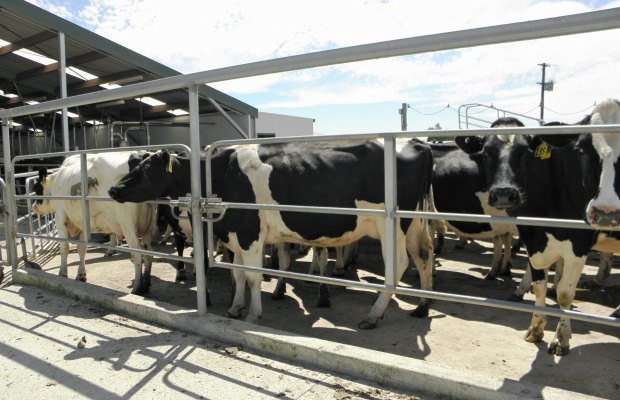The prevalence of Serratia bacteria appears to be on the rise in recent surveillance data.
Steve Cranefield, a technical veterinarian at AgriHealth and president of the Dairy Cattle Vets branch within the New Zealand Veterinary Association, has received an overwhelming number of calls from fellow vets grappling with Serratia-related issues on farms.
“Serratia is a common bug, it can often be found growing in a damp area like a bathroom, where it manifests as a pink or orange discolouration, like in a sink in a student flat,” Cranefield says.
“On dairy farms, it lives in the soil, particularly in wet conditions, and it is resistant to antibiotics and has a low self-cure rate so poses a huge threat if it gets into cows.
“So unfortunately culling is the recommended course of action when it is discovered.”
It is an environmental mastitis and has been around for a long time. Most cases have appeared sporadically in the past but Cranefield believes that is changing and it is becoming more common.
Last year, he worked with a farm in South Waikato that was having problems with a high bulk tank somatic cell count and the first step was to identify what bug they were dealing with by milk culture. They tested every cow and the results identified 92 of the 400 cows were positive for Serratia.
“It was a tough time, we had to break the news to the farmer that ultimately they were going to have to cull a quarter of their herd,” Cranefield says.
“And we had to implement a plan to minimise the risk among the rest of the herd.”
The farmer culled the majority of the Serratia-positive cows and kept some that were put into a separate herd and milked last. Not all of the positive cows had a high somatic cell count, one was even as low as 30,000 cells/ml, which highlights the importance of testing an entire herd when there is a tricky mastitis issue.
While trying to uncover the cause of the issue and minimise any further risk, they began by teat-scoring the herd, which is becoming more common in practice.
“We found plenty of dry teats and rough teat ends with cracking in 54% of the herd.
“Rough or damaged teat skin and teat sores provide sites for bacteria to become lodged and multiply so it is important to reduce and minimise that risk.
“I can’t stress the value of teat scoring enough, it provides great insight into what is happening on the farm and what could be contributing to mastitis problems.”
Changes to the teat spray mix and lowering the vacuum allowed the damaged teats to heal. Cranefield also recommends a MaxT milking regime to reduce over-milking and consequent teat end damage.
He warns: “The recent flooding events are likely to increase the risk of Serratia mastitis … if the water source was contaminated and it goes into the teat spray it may be sprayed onto the cows without the farmer knowing.”
With climate change and flooding events becoming more common, Cranefield says the battle with Serratia may continue to evolve and he advocates identifying bugs by culture.
“Culture high somatic cell count cows and teat score, teat score, teat score. The more information you have the easier it is to determine the best course of action to try overcome it.”
This article first appeared in the November edition of our sister publication, Dairy Farmer.
El Niño Watch: Animal welfare tips for hot, dry conditions
The team unpacks the chaotic spring season as dry spells increase and what’s to come. And special guest, vet Ivan Holloway, talks of a benign spring in the South Island, providing vital tips on how to keep stock happy and healthy in hot, dry conditions.










